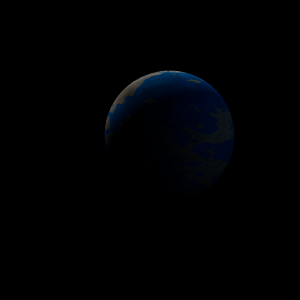|
|
Space Astro
|
Info for exoplanet "Baoyanu Po"
| Scientific (actual) data |
|---|
| Name | K2-72 c |
| Planet status | Confirmed |
| Radius | 0.103 |
| Orbital period | 15.189 |
| Semi major axis | 0.078 |
| Orbit eccentricity | 0.11 |
| Inclination | 89.54 |
| Discovered | 2016 |
| Updated | 2021-02-05 |
| Omega | 16.83 |
| Tconj | 2456990 |
| Publication | Published in a refereed paper |
| Detection type | Primary Transit |
| Radius measurement type | Primary Transit |
| Alternate names | EPIC 206209135.02 |
| Star name | K2-72 |
| Right ascension | 334.62° |
| Declination | -9.61° |
| Mag j | 11.685 |
| Mag h | 11.122 |
| Star distance | 66.56 |
| Star mass | 0.27 |
| Star radius | 0.33 |
| Star temperature | 3360.47 |
| Star alternate names | 2MASS J22182923-0936444, EPIC 206209135 |
| Wikipedia article | K2-72 c |
Back
| |
| Fictional info (?) |
|---|
| Suggested name | Baoyanu Po |
| Planet type | Terrestrial |
| It may have had water oceans in the past, but these would have vaporized as the temperature rose due to a runaway greenhouse effect.
Wind speeds can reach 45 metres per second.
Surface mostly dangerous because of the large poisonous bacteria that spend their life only while devouring the Ryupu plant if it is available. Most of them are related to the Nyumagyo but with wings and vary in size from 80 to 90 cm. The Nekepyo can survive temperatures from 50 to 140°C and near-vacuum. |
| Estimated population | 10000000 |
| Atmosphere | Methane | 94% |
| Carbon dioxide | 5.5% |
| Water | 0.039% |
| Oxygen | 0.0014% |
| Atmospheric pressure | 0.0014 bar |
 |
| Moon | Gyopyo | Huge round ice planetoid |
| Kugarya Nobyoi | Small slightly egg-shaped ice asteroid |
| Nagyufu Byanyo | Small slightly egg-shaped gaseous moon |
| Kukaeju Geshi | Huge round crater-filled moon |
| Bamiryu'renki Wa | Small round gaseous moon |
| Tabiu-ma | Small potato shaped crater-filled moon |
| Bamyo Myokya Su | Very small slightly egg-shaped crater-filled asteroid |
| Taryaru Hechu | Small potato shaped rocky moon |
| Nyurya | Huge irregular rocky moon |
| Sakyo | Very small potato shaped rocky moon |
| Bomupi Bapyora-nu | Large slightly egg-shaped gaseous asteroid |
| Myumya Nugu Sa | Small round gaseous comet |
| Byonyo-npyukyu | Large slightly egg-shaped crater-filled planetoid |
| Romyo'byu | Medium-sized round rocky asteroid |
| Yarya Po | Small almost round rocky planetoid |
| Paku-so | Very small almost round rocky comet |
| Google search for Baoyanu po |
|
Website by Joachim Michaelis
|
|
|
|